#King Kharavela
Text
Udayagiri and Khandagiri Caves: Intricate Jain Monuments to Faith | Ancient Origins
https://www.ancient-origins.net/ancient-places-asia/udayagiri-caves-0017410
View On WordPress
#1st century BC#2nd century BC#5th century BC#Ananta Gumpha#Ancient India#Asceticism#Ascetics#Bassavadatta#Cave Number One#Dwarapala#Gaja-Lakshmi#Ganesha#Hathi Gumpha#Hinduism#India#Jainism#Jinas#Kalinga#Khandagiri#King Kharavela#King Kharvela#King Udayana of Kausambi#Mahameghavahana Dynasty#Mahāvīra#Moksha#Namokata Mantra#Neminatha#Parshvanatha#polytheism#polytheistic
0 notes
Text
जिसके डर से विदेशी आक्रमणकारी भाग गए थे, भारत के महान सम्राट खारवेल की कहानी
Delhi: Kalinga King Kharavela News: भारत के इतिहास में एक ऐसे राजा हुए थे जिनसे डरकर एक विदेशी आक्रमणकारी भाग गया था। इस महान राजा का नाम था खारवेल। कलिंग के इस महान राजा ने अपने शासनकाल के दौरान कलिंग को एक अपराजेय किला में तब्दील कर दिया था। http://dlvr.it/SgSDcm
0 notes
Text
One of the best hotels near Kalinga Nagar Airport
Explore the beautiful city of Bhubneswar, which is home to many temples, with the help of Kalinga Nagar hotels, which are conveniently located close to the airport.
Ginger, one of the greatest Kalinga Nagar Hotels offers free wifi, a contemporary fitness centre, in-room dining, air conditioning, a tea or coffee maker, a mini-refrigerator, an LCD or LED TV for entertainment, meeting spaces, and laundry services. Additionally, Ginger has flat-screen televisions in its air-conditioned rooms. Diet-conscious visitors will value the resort's nutritious eating choices. All throughout COVID, the proper safety procedures were taken in accordance with the ministry's guidelines.
One of the hotels near Kalinga Nagar Airport is Ginger, and it offers twin and queen rooms. The hotel also offers specially built rooms for guests with particular needs to have a hassle-free, high-quality stay. Ginger is without a doubt one of the best budget hotels in the area and guarantees a memorable stay.
The high-quality services and leisure time you will enjoy at Ginger, one of the best hotels near Kalinga Nagar Airport, are hard to find at hotels with prices as low as Ginger's. The distance between the hotel and the airport, only 8 kilometres, makes it convenient for guests to avoid paying for transportation there and back. The motel is adjacent to a bus stop, a train station, and various modes of transit.
The eastern coastal plains, along the axis of the Eastern Ghats mountains, are home to Odisha's capital, also known as Temple City. The city is home to some of the most important religious and cultural sites on the planet. Temples including the Lingaraj Temple, Rajarani Mandir, Konark Sun Temple, Puri Jagannath Temple, and others are easily accessible from the Ginger Hotel Kalinga Nagar. Other well-known features of the city include the Machha Jhol, Rasgulla, Rasabali, Chhena Gaja, Chhena Jhilli, and Chhena Poda cuisines as well as the Rath Yatra-temple automobile festival.
The Museum of Tribal Arts and Artefacts, Lingaraja Temple, Mukteswara Temple, Rajarani Temple, Dhauli Giri Hills, and Nandankanan Zoological Park are just a few of the city's top attractions that are close to the hotel.
A number of temples, including the Rajarani Temple and the Lingaraja Temple, may be seen in the lovely city of Bhubaneswar. The Ginger Hotel, one of the most popular hotels in the area, offers minimalist luxury and is conveniently located in Bhubaneswar's commercial district. Along with attractively constructed rooms, it offers a wide range of services, such as meeting rooms, restaurants, gyms, and interactive lobby spaces. The best time to go to the city is from September to February. While monsoons produce relatively little rain, winter evenings can get rather cold. In contrast to the sweltering and steamy summers, Bhubaneswar's winters are moderate and pleasant. Ginger Hotel is the best selection for Nayapalli family hotels or low-cost hotels.
The first zoological park in India to offer a white tiger safari is Nandankanan Zoological Park. Being confined in a car while the animals wander freely in the open jungle provides a unique sensation. After a twenty-minute trip via winding roads that cut through the natural forest in a specially protected vehicle, visitors on the lion safari are led right up to a pride of lions. By taking the safari bus service, visitors can also experience close-up encounters with sloth bears in their natural habitat.
There are two partially man-made and half-natural caverns close to Cuttack. These caves, today known as Udayagiri and Khandagiri, were once referred to as Cuttack Caves or Kattaka Caves. On Udayagiri and Khandagiri, two nearby hills that make up the Kumari Parvata, are the caverns. There are numerous caves from the first century BCE that have been beautifully sculpted. According to legend, King Kharavela had the majority of these caverns carved out so that Jain monks could live there. Udayagiri, which means "Sunrise Hill," has 18 caverns as opposed to Khandagiri's 15 caverns.
One of the largest and oldest temples in the area, the Lingaraja Temple, honors Lord Shiva. The temple, the most recognizable building in Bhubaneswar, is one of the most popular tourist destinations in the state. Shiva's well-known form is called Lingaraja, which translates to "King of Lingam." The current structure of the temple was constructed in the final decade of the eleventh century. Part of the temple was built in the sixth century CE, according to a number of works of Sanskrit literature from the seventh century.
There are several excellent 3-star hotels near Kalinga Nagar Airport that can accommodate your demands, but none can match the services provided by the Ginger hotel. Each and every traveller's desire is handled at Ginger Hotel locations with painstaking care and thoroughness. Modern conveniences and first-rate services are offered to visitors at the hotel to enhance their enjoyment of their stay at Ginger Hotels.
#3-star hotels near Kalinga Nagar Airport#Kalinga nagar hotel#hotels near Kalinga nagar bus stop#best hotels in Kalinga nagar
0 notes
Text
Places you must visit in Odisha
Ever heard of Odisha? Odisha state is known for its ancient temples and architecture and the age-old reign of the Kalinga empire. This state is located in the eastern part of the Indian peninsula and the Bay of Bengal lies to its east. The ancient temples of Odisha date back over 2000 years.

These are some famous places in Odisha:
Lingaraj Temple
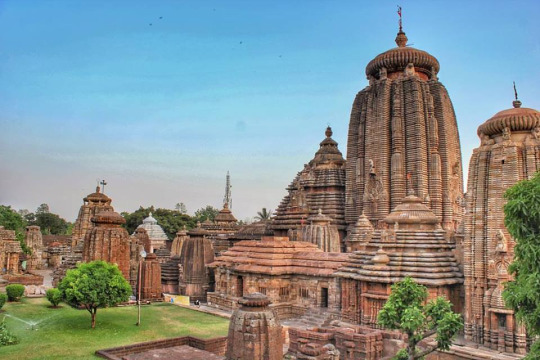
This temple is dedicated to Lord Shiva and is one of the oldest temples in Bhubaneshwar. It was built by King Jajati Keshari in the 10th Century and completed by King Lalatendu Keshari in the 11th Century. This temple represents the pinnacle of Kalinga architecture, completing the mediaeval stages of the architectural tradition in Bhubaneswar.
Non-Hindus are not permitted to enter the temple. However, tourists can get a good view of the entire temple complex and take photos from a raised platform just outside the temple complex.
Konark Sun Temple

It is a 13th-century Sun temple at Konark, a town in the district of Puri in Odisha. It is a UNESCO World Heritage site which is famous for its unique Kalinga architecture includes a depiction of a 100 ft high chariot being pulled by horses and wheels carved out of a single stone. One can witness three images of the Sun God in three directions to catch the rays of the Sun at dawn, noon and sunset.
Golden Beach

It is among the cleanest beaches in India and has earned the most prestigious Blue Flag certification. It is about 2 km away from the Jagannath Temple in Puri. The beach also has basic facilities like bathing and changing facilities, toilet and drinking water facilities. There are many hotels, restaurants, and resorts around this beach. In addition, it is one of the safest beaches since Puri police officers constantly monitor the area to ensure the safety of tourists and locals.
Nandankanan Zoo

It is one of Asia's largest zoos and is India's first zoo with a white tiger safari. It is home to approximately 1660 individual animals representing 166 species, including 67 mammal species, 81 bird species, and 18 reptile species. There is a lot to discover at this large zoo. You can take a boat ride on Kanjia Lake or visit the Souvenir Shop, which sells a variety of local handicrafts and gift items.
Jagannath Temple

It is an important Hindu temple dedicated to Jagannath which is a form of Vishnu. The temple was built in the 12th century by King Chodaganga. The construction of the temple was completed by Anangabhima Deva in 1174 AD. It is famous for its Rath Yatra and other chariot festivals in which three principal deities are pulled on huge and elaborately decorated temple cars. It is one of the Char Dham pilgrimage sites which every Hindu must visit to attain Moksha.
Udayagiri and Khandagiri Caves

Also known as Kattaka Caves or Cuttack caves, are partly natural and partly artificial caves of archaeological, historical and religious importance situated on adjacent hills of Udaygiri and Khandagiri hills. These caves were built around the 2nd century BCE during the reign of King Kharavela of the Meghavahana dynasty. These caves were carved out as residences for the Jain monks.
Chandrabagha Beach

It is one of the finest beaches on the eastern coast of India. It is located at a distance of 3 km from the Konark temple. This beach offers boating and camel riding services. It is also known for the Sand Art Festival which is held every year from the 1st of December to the 5th of December when renowned sand artists across the globe gather to exhibit their talents. Every year a Magamela fair is held at this beach on Magha Saptami. The beach offers a variety of activities, including swimming, surfing, and sunbathing.
Barabati Fort

Barabati Fort was built by Raja Anangabhimadeva III, of the Eastern Gangas at the beginning of the 13th century. The ruins of the old Barabati Fort lie on the right bank of the Mahanadi, in the western part of Cuttack city. Historians claim that Barabati Fort once housed a nine-storey palace. The monument was built with fortification as a defence to protect Kattaka (Cuttack) against enemy attacks.
Chilika Lake

It is Asia’s largest brackish water lagoon which is spread over the Puri, Khurda and Ganjam districts of Odisha state on the east coast of India. It is the biggest lake in India after Vembanad Lake. Chilika is home to some of the country's largest flocks of migratory birds, especially during the winter. It is the real paradise for the bird-lovers and ornithologists as it attracts numerous aquatic birds.
Dhauli Giri Hills

Also known as Dhauli is a hill located on the banks of the river Daya, 8 km south of Bhubaneswar in Odisha. It is known for "Dhauli Santi Stupa", which is a peace pagoda. The famous Kalinga war was fought in Dhauli. The bloodshed on the battlefield and the River Daya is said to have turned the waters red. The aftermath of the war deeply affected King Ashoka, who later embraced Buddhism and became a propagator of peace.

Final Note
These are the places that you must not miss when you visit Odisha. Odisha tourism is known for the holy pilgrimage visits by the Hindu communities in India every year. Since Odisha was an old empire of Kalinga, you will find many temples and monuments with Kalinga architecture. Odisha also has many beaches where you can spend some quality time with your friends and family. Are you planning a trip to Odisha? Best Trip has the best travel services for you at the best prices. We strive to give you the best travel experience.
1 note
·
View note
Text
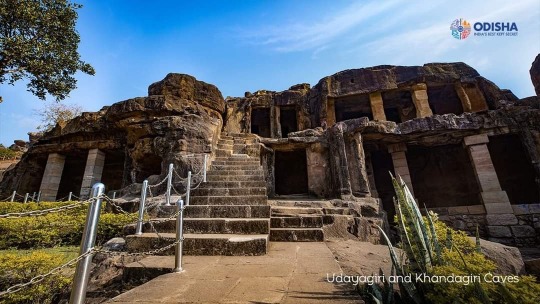



*20th Aug 2022, Saturday*
*Udayagiri and Khandagiri Caves*, formerly called Kattaka Caves or Cuttack caves, are partly natural and partly artificial caves of archaeological, historical and religious importance near the city of Bhubaneswar in Odisha, India. The caves are situated on two adjacent hills, Udayagiri and Khandagiri mentioned as Kumari Parvata in the Hathigumpha inscription. They have a number of finely and ornately carved caves built during the 1st century BCE. It is believed that most of these caves were carved out as residential blocks for Jaina monks during the reign of King Kharavela. Udayagiri means "Sunrise Hill" and has 18 caves while Khandagiri has 15 caves
1 note
·
View note
Text
The Top 10 Tourism Places in Bhubaneswar
Bhubaneswar, the capital of Odisha, is a city with a long history and a rich cultural heritage. However, it is also a city that is rapidly modernizing, and as a result, it is becoming increasingly popular as a tourist destination. In this blog post, we will explore the top ten tourism places in Bhubaneswar.
10 Tourism Places in Bhubaneswar
Lingaraja Temple
The Lingaraja Temple is one of the most important Hindu temples in Bhubaneswar, Odisha. It is over 1,000 years old and is a vital part of the city's religious and cultural heritage. The temple is dedicated to Lord Shiva and is one of the largest temples in India. Every year, millions of pilgrims visit the temple to worship and take part in the many festivals and celebrations that take place there. The Lingaraja Temple is a magnificent structure, with intricate carvings and beautiful sculptures. It is one of the most popular tourist destinations in Bhubaneswar and is a must-see for anyone visiting the city.
Museum of Tribal Arts and Artefacts
The Museum of Tribal Arts and Artefacts in Bhubaneshwar is dedicated to preserving and promoting the rich cultural heritage of the tribes of Odisha. The museum houses a collection of over 2000 artefacts, including traditional dress, jewellery, musical instruments, and more. The museum also has a library and a research centre, which are open to the public.
The Museum of Tribal Arts and Artefacts is a valuable resource for those interested in the rich culture and history of the tribes of Odisha. It is also a great place to learn about the traditional arts and crafts of the tribes. If you are visiting Bhubaneshwar, be sure to check out the Museum of Tribal Arts and Artefacts.
Regional Museum of Natural History
The Regional Museum of Natural History, Bhubaneshwar is one of the premier institutions of its kind in India. The Museum houses a rich collection of specimens and artefacts related to the natural history of the region. The museum is also home to a well-stocked library and herbarium. The Museum is a popular destination for school and college students, as well as for general visitors.
Udayagiri and Khandagiri Caves
The Udayagiri and Khandagiri Caves are a set of ancient rock-cut caves located in Bhubaneshwar, India. The caves were built during the 2nd century BCE by the King of Orissa, Kharavela. The caves served as a palace for the king and his court, and they also served as a religious site for Jain monks.
The Udayagiri Caves are the largest and most impressive of the two sites. They are carved into a hillside and feature a series of ornate temples and sculptures. The Khandagiri Caves are smaller and less ornate, but they are still an important historical site.
Today, the Udayagiri and Khandagiri Caves are a popular tourist destination. They are a key part of Bhubaneshwar.
Rajarani Temple
Rajarani Temple is a beautiful example of Odisha temple architecture, located in the city of Bhubaneshwar. The temple is made of sandstone and is adorned with intricate carvings and sculptures. It is believed to have been built in the 11th century and is dedicated to Lord Vishnu.
The Rajarani Temple is a popular tourist destination and is one of the most iconic landmarks in Bhubaneshwar. It is a must-visit for anyone interested in Indian temples and architecture.
ISKCON Bhubaneswar
ISKCON Bhubaneswar, located at Sri Sri Radha Madan Mohan Temple, is a vibrant community of devotees that seeks to promote the practice of bhakti yoga and spread the love of Krishna throughout the world.
The temple is open to all and offers a variety of programs and events that are open to the public. These include weekly classes on the Bhagavad Gita, daily classes on Krishna consciousness, and a variety of other spiritual and cultural seminars and events.
ISKCON Bhubaneswar is also home to a community of resident monks and nuns who live, study, and worship at the temple. The community is open to all who wish to join and is a great place to learn more about bhakti yoga and the practice of Krishna consciousness.
Dhauli Giri
Dhauli Giri, also known as Dhauli Hill, is a beautiful spot in Bhubaneswar, India. The hill is known for its serene surroundings and stunning views. It is also home to the Dhauli Peace Pagoda, which was built in 1972 to promote world peace.
Dhauli Giri is a great place to visit if you're looking to get away from the hustle and bustle of the city. The hill is easily accessible by both car and foot, and there are plenty of photo opportunities around every corner. If you're interested in Hindu culture and history, Dhauli Giri is also a great place to learn more about India's rich past.
Nandan Kanan Zoo
Nandan Kanan Zoo is one of the largest zoos in India, spread over an area of 372 acres. It is located in Bhubaneswar, the capital city of Odisha. The zoo has more than 3000 animals, making it one of the biggest zoos in the country.
The zoo was established in the year 1963 and was named after Nandankanan, a mythical forest in Hindu mythology. The zoo is home to a wide variety of animals, including tigers, lions, elephants, leopards, bears, and reptiles. The zoo also has a bird sanctuary, which is home to more than 200 species of birds.
The Nandan Kanan Zoo is a perfect place for a family outing, as it has something for everyone. The zoo offers a great opportunity to see some of the rarest animals.
Ekamra Kanan
Ekamra Kanan is a sacred grove located in Bhubaneswar, Odisha, India. It is one of the oldest and largest temple complexes in the world, and a major pilgrimage site for Hindus. Ekamra Kanan covers an area of over 100 acres and contains more than 3,000 temples, making it a veritable city of temples.
The complex is split into two parts: the smaller and older Ekamra Kshetra, which contains the main shrine of Lord Shiva, and the larger and newer Swargadwar, which contains the shrines of other Hindu deities. Ekamra Kanan is said to be the birthplace of the Hindu god Krishna, and it is also home to the famous Lingaraja Temple, one of the largest and most important temples in India.
Konark Sun Temple
The Konark Sun Temple is a 13th-century Hindu temple dedicated to the sun god Surya. It is located in the town of Konark, in the state of Odisha in India. The temple is believed to have been built by King Narasimha Deva I of the Eastern Ganga Dynasty.
The Konark Sun Temple is one of the most popular tourist attractions in Odisha. It is also a UNESCO World Heritage Site. The Konark Sun Temple is known for its architecture and artistry. The temple is designed in the shape of a chariot, with twelve wheels and seven horses. The temple is adorned with intricate carvings and sculptures.
The Konark Sun Temple is a beautiful and unique temple that is definitely worth a visit. If you are ever in Odisha, be sure to check it out!
Read the full article
0 notes
Text
Causes of the Kalinga War King Ashoka wanted to embark upon the path of his father, Bindusara, and grandfather, Chandragupta Maurya. During the reign of the Nandas, Kalinga was a province of the Magadha Empire. Kalinga became an independent state after the Nandas were defeated by Chandragupta Maurya The Kalinga War (ended c. 261 BCE) was fought in ancient India between the Maurya Empire under Ashoka and the state of Kalinga, an independent feudal kingdom located on the east coast, in the present-day state of Odisha and northern parts of Andhra Pradesh.
Mahameghavahana Kharavela
In the early past of the 1 st century B.C. Kalinga became independent under the Chedi Chief Mahameghavana. The third ruler of this dynasty was Kahravela who flourished during the second half of the 1 st century B.C. The Hatigumpha inscription in Udayagiri near Bhubaneswar furnishes detailed accounts about the life and activities of Kharavela from his boyhood to his 13 th regnal year. It is known from this record that Kharavela on the premature death of his father took up the administration first as a Yuvaraja and then on completion of 24 years of age ascended to the throne as Maharaja. In the first year of his coronation he repaired the gates and rampants of his capital Kalinganagari which had been damaged by cyclone. In the second year he invaded the territory of the Satavahana king Satakarni I and marching up to the river Krishna stormed the city of Asika. In the 3 rd year of his reign he organized various performances of dance and music and delighted the people of Kalinganagari. In the fourth year he again invaded the Satavahana kingdom and extended his political supremacy over the region. In the fifth year he is known to have renovated the aqueduct that was originally excavated three hundred years back by Mahapadmananda. In the sixth year he remitted taxes and gave benevolences both in urban and rural areas of his kingdom. The account of his seventh year is not known. But that year his chief queen-“The Queen of the Diamond Palace” gave birth to a son. In his eighth regnal year he led a military expedition against Rajagriha. By that time the Indo-Greeks who were in possession of Mathura were advancing towards Pataliputra but getting the news of the triumph of Kharavela at Rajagriha the Yavana king had to retreat to Mathura. Kharavela pursued the Indo-Greeks and purged them out of Mathura which was an important seat of Jain religion and culture. In commemoration of this achievement he built a victory palace in Kalinga at a cost of thirty-eight hundred thousand penas during the ninth year of his reign. In the tenth regnal year he again invaded northern India the account of which is not clearly known. In the eleventh year of his reign Kharavela defeated the Tamil confederacy which was in existence thirteen hundred years before his time. In the twelfth year he invaded northern India for the third time and advanced as far as Uttarapatha, “north-western part of India”. On his return he terrorized Maghadha. Brihaspati Mitra, the king of Magadha surrendered and Kharavela brought from Magadha the image of Kalinga Jina as trophy of his victory along with rich treasures. Kalinga Jina had been taken away from Kalinga by Mahapadmananda three hundred years back and its restoration was considered to be a great achievement of Kharavela. In his thirteenth regnal year Kharavela excavated a number of cave-dwellings in the Kumari hills for the Jain monks and bestowed endowments for them. Jainism greatly flourished in Kalinga under the sincere patronage of Kharavala. He was also extending liberal patronage towards other religious communities and earned great reputation as the worshipper of all religious orders and the repairers of all religious shrines.
The Hatigumpha inscription records the activities of Kharavela up to his thirteenth regnal year after which nothing is known about him. He was probably succeeded by his son Kudepasiri. The Mahameghavahana dynasty continued to rule over Kalinga and Mahishaka up to the 1 st century A.D. as known from some recently discovered inscriptions of Guntupalli and Velpuru in Andhra Pradesh. The Velpuru inscription reveals the rule of one Airamaharaja Haritiputra Manasada who belonged to Mahameghavahana dynasty.
About Kalinga History
0 notes
Text
10 BEST PLACES TO VISIT IN ODISHA
PURI { JAGANNATH TEMPLE}
Abode of Lord Jagannath, the ancient city of Puri is developed around a temple dedicated to the presiding deity. Witnessing a footfall of thousands daily, this religious site is an attraction that is impossible to miss if you are in Puri

BHUBANESWAR { LINGARAJA TEMPLE}
The Lingaraja temple is the largest temple in Bhubaneswar. Lingaraja Temple is a Hindu temple dedicated to Shiva and is one of the oldest temples in Bhubaneswar, the capital of the East Indian state of Odisha. The temple is the most prominent landmark of Bhubaneswar city and one of the major tourist attractions of the state.

PIPILI
Together with Pattachitra and stone craft, the Applique work at the heritage craft village Pipili are Odisha’s most famous art exports to the world. Pipili is also used to adorn the chariots of Lord Jagannath and his siblings during the annual Ratha Yatra.

KHANDAGIRI CAVES
The caves located 7KM from Bhubaneswar takes us back in time and is probably the only recorded history of era that is still shrouded in mystery. Built somewhere around the 2nd century BC by King Kharavela of the Meghavahana dynasty, widely regarded as the most powerful king in the annals of history of Odisha.

KORAPUT { RAISIL }
60 Kms away from Koraput district of Odisha, 1 stone hill with a perennial stream that attracts a big no of weekend visitors. This RAISIL place is ideal for trekking surrounded by natural beauty. Anla Navami is celebrated every year in this place.

HIRAKUD DAM
Man-made floods due to release of huge quantity of water from Hirakud dam have come back to haunt Odisha. Hirakud is the longest earthen Dam in the world and stands across the mighty river, Mahanadi, in the Sambalpur region of Odisha. It was the first major multipurpose river valley project after India’s Independence in 1947.

DHAULI TEMPLE
Dhauli Santi Stupa is located on the banks of the river Daya, 7 kms Distance From Bhubaneswar city in Odisha (India).Lord Buddha worshipped here since 1972 when the kalinga war ends here then after its foundation laid.
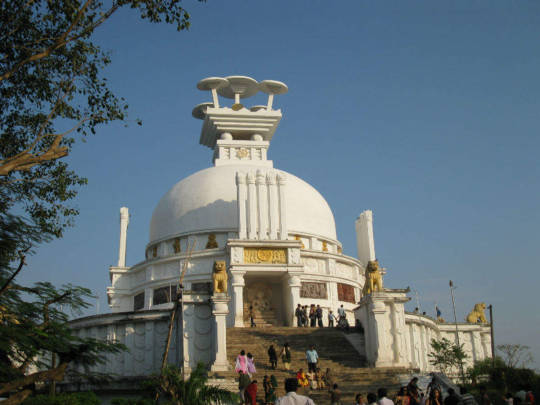
CHILIKA LAKE
One of the highlights of the train travel was when the train traveled right next to Chilika Lake. We as a family did quite a few trips to Puri but somehow always skipped a trip to Chilika. Forever I wanted to see the Dolphins and of course the charm of a long boat ride.
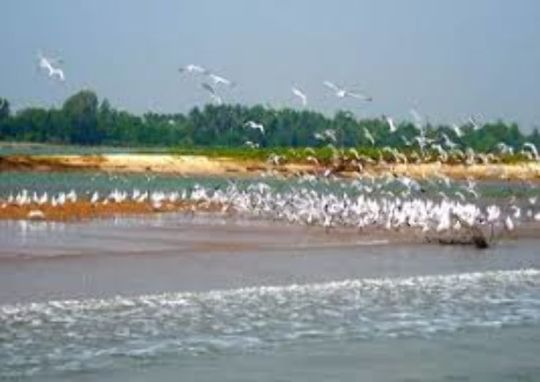
SMILIPAL NATIONAL PARK
Simlipal national park as more than 1000 different varieties of plant species. Along with this 96 species of orchids which make visitors awestruck with its amazing natural beauty. This park located in the Mayurbhanj district of Odisha.

KONORK TEMPLE
Famous for its sun temple, Konark has always been a magnet for tourists from all around the globe. The sheer magnificence of Konark Sun temple makes this coastal city one of the must visit destinations in India.

Thank you
2 notes
·
View notes
Text
Udayagiri & Khnadagiri Caves
----Symbols of religious diversity in India
Hello Friends!!! have you ever thought about a city which is rooted and drowned in Hinduism but responsible to protect the diverse religious characteristics of India by preserving these twin caves call 'Udayagiri & Khnadagiri'.

Situated in Bhubaneswar these heritage architectures are the major tourist pooling sites. While going home to Kolkata I had a 6 hours break in Bhubaneswar. So, as always I pulled out all possible information about the near about side scenes.
I decided to visit Udayagiri & Khnadagiri as I am very passionate towards historical and religious architectures. lets take a quick look about the history of it. The exact location is in Bhubaneswar, khurda district. These two are the earliest rock cut Jain caves which were curved by Jain monks and artisans from the times of king Kharavela. These two monumental caves are not only manifests the genius architectural sense of ancient India but also shows the early inscriptions of love, tolerance and religious description.
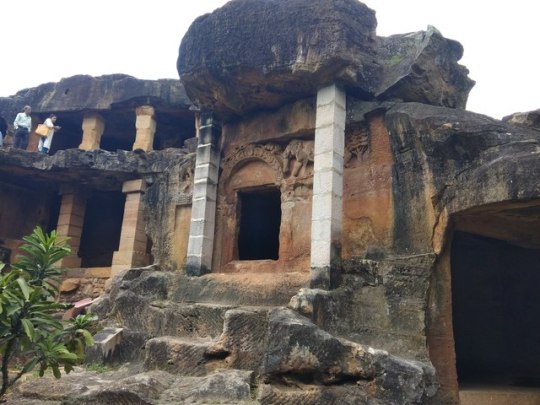
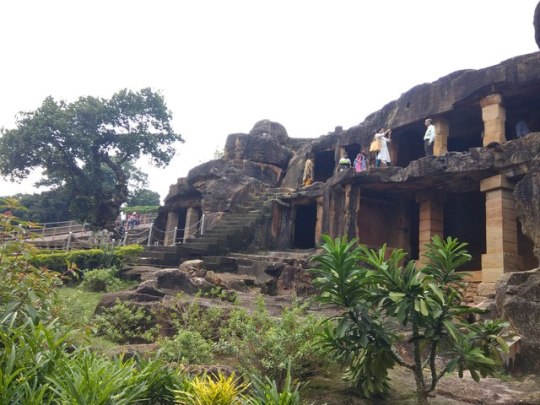
All the caves are carved in sandstone and each one is different in character also their rooftops are very low in height. You can experience the silence and sacred feeling of the place. This gives you an unique feeling like the whole evidence of history or a spectacular architecture of first century BC is standing still between a full fledged on growing metro city. the site was giving me a feeling of changing time, progress, urbanization and a lost past. These monumental heritages bridged the history and time together. These helps us to remember the glorious past of India and an endeavour to cherish the diversity which signifies our beloved India.
You may experience a spectacular view from the top of Udayagiri cave. The thin white line of urban architecture from a stone carved cave builds a connection between centuries of history and religion.
Khandagiri : Its very close to the Udayagiri cave. From the main road one can see the easy trails. They are marked very clearly from the entrance to the summit. The caves of Khnadagiri are located at the height of 118 ft. There are several caves resides in a single premises. 'Khandagiri' means broken hills. There are 15 caves in Khandagiri.
A heritage of 2000 years old was the shelter of many Jain scholars. The caves are beautifully carved with inscriptions, motifs and relief sculptures. These caves presents the first occupation of Jain and Buddhists.
These two twin caves are the primary attraction of Odisha tourism. Good to see the maintenance and the security provided by the state government. Hope it remains same.
Thanks for reading!! See you soon guys.
2 notes
·
View notes
Photo
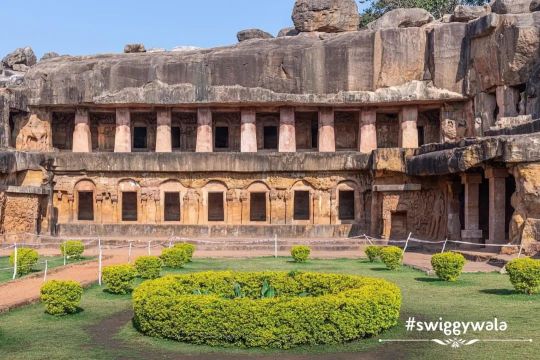
Dating back as early as the 2nd century B.C, Udayagiri Caves are a fascinating set of deep cut sandstone caves 3km W of Bhubaneswar in Odisha. Built by the Jain ruler Kharavela, the caves were part of a large Jain monastic complex. Whilst many of the caves appear to have been converted into shrines, originally it is believed they served as dormitories and study areas for monks. The west-facing Rani Gumpha (Cave 1) is the largest and finest excavation in the Udayagiri complex. The word ‘Rani’ means Queen, some believe that the queen of king Lalatendu Kesari once occupied this cave. The superb sequence of relief carvings on the upper floor are quite mysterious and remain unidentified, potentially from a lost epic. Themes here are replicated in the Ganesh Gumpha (Cave 10) as well as other caves in the complex. Image 2 - Initial scene depicts an attendant carrying a multitude of items on his tray and in his arms. Image 3 - This is followed by a group of three elephants cowering before a group of ten people, including a man holding a club and a woman whose arms are raised as if to strike the animals. Image 4 - Further along are a man and a woman fighting with swords and shields, and what appears to be a woman being abducted, she is being carried away in the arms of an armed male. Image 5 - Next to that is a horse sheltering under a parasol with three attendants, with an archer (possibly a king?) taking aim at a winged deer which is accompanied by two fawns. This archer (the same one?) is seen again next to a naked woman climbing down from a tree. Image 6 - The final scene that is well enough preserved shows a music and dance performance in a court. At one end are the king and queen with accompanying attendants. The musical party appears to involve six women, three of which are playing cymbals, a harp, and a mridangam (a double-sided drum). There appears to be further scenes to the right which are unfortunately now lost. Some scholars have speculated that these scenes depict the personal life of King Kharavela. #swiggywala #localguides @googlemaps #IncredibleIndia #indianhistory #heritageofindia #tourismindia #jaintemple #jainism #jain #odishaclicks #orissa https://www.instagram.com/p/CcKxgEMv0e6/?igshid=NGJjMDIxMWI=
#swiggywala#localguides#incredibleindia#indianhistory#heritageofindia#tourismindia#jaintemple#jainism#jain#odishaclicks#orissa
0 notes
Text
Udayagiri and Khandagiri Caves: Intricate Jain Monuments to Faith | Ancient Origins
https://www.ancient-origins.net/ancient-places-asia/udayagiri-caves-0017410
View On WordPress
#1st century BC#2nd century BC#5th century BC#Ananta Gumpha#Ancient India#Asceticism#Ascetics#Bassavadatta#Cave Number One#Dwarapala#Gaja-Lakshmi#Ganesha#Hathi Gumpha#Hinduism#India#Jainism#Jinas#Kalinga#Khandagiri#King Kharavela#King Kharvela#King Udayana of Kausambi#Mahameghavahana Dynasty#Mahāvīra#Moksha#Namokata Mantra#Neminatha#Parshvanatha#polytheism#polytheistic
0 notes
Text
Kalinga
Its territory formed a part of the ancient Kalinga of Mahabharat fame. Ashok the Mauryan King of Magadh, invaded Kalinga in 261 BC and this event has gone down in history as the Great Kalinga war. Then the people of Kalinga offered a relentless & dauntless resistance, but they lost at last. How desperate was the battle, how bitterly was it fought, and how terrible were the results, are known from Ashok’s own descriptions. This is what he wrote about the Kalinga war in his thirteenth Rock Edict. The country of Kalinga was conquered when King Priyadarshan, beloved of the Gods had been anointed eight years. One hundred and fifty thousand were there from captured, one hundred thousand were there slain, and many times as many died.
But what was the result? The conquered Kalinga conquered her conqueror. This was the last war fought by him after which he became the great champion of Buddhism and upheld the values of peace and non-violence.
The ancient state rose to prominence as a Kingdom under Kharavela , a great conquerer and patron of Jainism, in the second half of the Ist century B.C. Other great rulers belonged to the Keshari dynasty and the Eastern Ganga dynasty who were also great builders.
At one time the vast kingdom spanned from Ganga to Godavari. The flourishing maritime trade with South-East Asian countries i.e. Java, Bornio had brought in a golden era of affluence and opulence.
0 notes
Text
One of the Hotels near Kalinga Nagar Airport is Ginger
Explore the beautiful city of Bhubneswar, which is home to many temples, with the help of Ginger Kalinga Nagar, which is conveniently located close to the airport.
One of the greatest 3-star hotels in Kalinga Nagar offers free wifi, a contemporary fitness center, in-room dining, air conditioning, a tea or coffee maker, a mini-refrigerator, an LCD or LED TV for entertainment, meeting spaces, and laundry services. Additionally, Ginger has flat-screen televisions in its air-conditioned rooms. Diet-conscious visitors will value the resort's nutritious eating choices. All throughout COVID, the proper safety procedures were taken in accordance with the ministry's guidelines.
One of the hotels near Kalinga Nagar Airport is Ginger, and it offers twin and queen rooms. The hotel also offers specially built rooms for guests with particular needs to have a hassle-free, high-quality stay. Ginger is without a doubt one of the best cheap hotels in the area and guarantees a memorable stay.
It is difficult to find other hotels with costs as inexpensive as Ginger's that offer the high-quality services and leisure time you will experience at Ginger, one of the best 3-star hotels in Kalinga Nagar. Only 8 kilometres separate the hotel from the airport, making it ideal for visitors to avoid paying for transportation there and back. The bus stop and train station, as well as other transportation options, are located close to the hotel.
The capital of Odisha, sometimes referred to as Temple City, is located on the eastern coastal plains along the axis of the Eastern Ghats mountains. Some of the most significant religious and cultural landmarks on earth are located in the city. From the Ginger Hotel Kalinga Nagar, it is simple to reach temples like the Lingaraj Temple, Rajarani Mandir, Konark Sun Temple, Puri Jagannath Temple, and others. The Machha jhol, Rasgulla, Rasabali, Chhena Gaja, Chhena Jhilli, and Chhena Poda cuisines, as well as the Rath Yatra-temple automobile festival, are other famous aspects of the city.
The hotel is close to all of the city's top sights, including the Museum of Tribal Arts and Artefacts, Lingaraja Temple, Mukteswara Temple, Rajarani Temple, Dhauli Giri Hills, and Nandankanan Zoological Park.
Discover the charming city of Bhubaneswar, where you can see a number of temples, like the Rajarani Temple and the Lingaraja Temple. One of the most sought-after hotels in the city, Ginger Hotel offers lean luxury and is well situated in the commercial heart of Bhubaneswar. It includes a wide range of amenities, including interactive lobby areas, a conference room, a gym, and a restaurant, in addition to elegantly decorated rooms. The ideal months to visit the city are September through February. Winter evenings can be quite cold, whereas monsoons have comparatively little rain. The winters in Bhubaneswar are mild and pleasant, while the summers may get very hot and muggy. The finest option for Nayapalli family hotels or cheap hotels is Ginger Hotel.
Nandankanan Zoological Park is the first zoo in India to have a white tiger safari. It offers a distinctive experience as visitors are cooped up in a car while the animals roam free in the wide-open jungle. In the lion safari, guests are escorted right into the pride of lions following a twenty-minute drive in a specially protected vehicle via meandering roads crisscrossing the natural forest. Visitors can also get up and personal with sloth bears in their natural habitat by using the safari bus service.itat.
Near Cuttack, there are two caves that are partially natural and partially man-made. These caves are called Udayagiri and Khandagiri, and they were originally known as Kattaka Caves or Cuttack Caves. The caverns are situated on Udayagiri and Khandagiri, two adjacent hills that make up the Kumari Parvata. Numerous well-carved caves from the first century BCE can be found there. The majority of these caverns are said to have been carved out during King Kharavela's reign to serve as Jain monk dwellings. Khandagiri has 15 caverns, whereas Udayagiri, which means "Sunrise Hill," has 18.
The Lingaraja Temple, which honours Lord Shiva, is one of the biggest and oldest temples in the area. One of the most well-known tourist attractions in the state is the temple, which is the most recognisable structure in Bhubaneswar. Lingaraja, the name of Shiva's well-known form, is translated as "King of Lingam." The final decade of the eleventh century is when the temple's current building was built. According to many works of Sanskrit literature from the seventh century, part of the temple was constructed in the sixth century CE.
There are several excellent 3-star hotels in Kalinga Nagar that can accommodate your demands, but none can match the services provided by the Ginger hotel. Each and every traveller's desire is handled at Ginger Hotel locations with painstaking care and thoroughness. Modern conveniences and first-rate services are offered to visitors at the hotel to enhance their enjoyment of their stay at Ginger Hotels.
0 notes
Photo
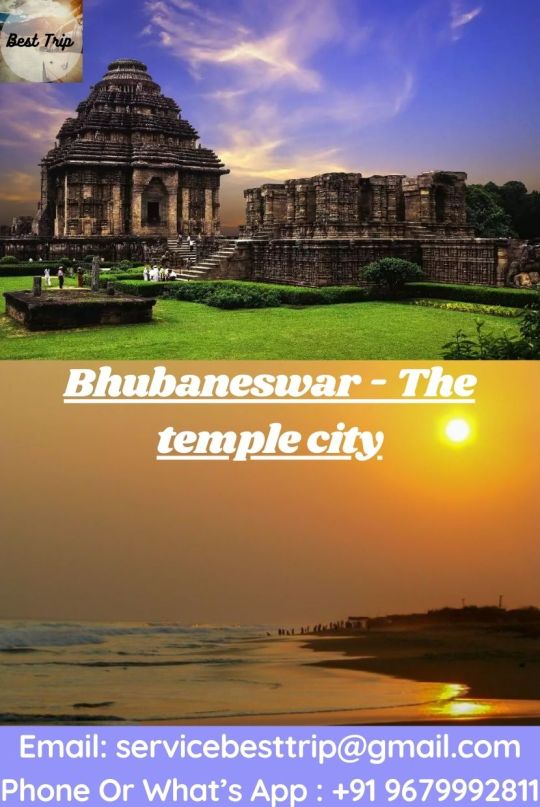
Bhubaneshwar is the state capital of Odisha and also the largest city of the state of Odisha. It is rightly known as the ‘Temple City’ of India as it is home to some of the most prominent temples. Bhubaneshwar along with the Konark city and Puri forms a triangle which is known as the 'Swarna Tribhuja' ("Golden Triangle").
Places to visit in Bhubaneshwar
These are some of the places in Bhubaneshwar that you must visit:
Lingaraja Temple

It is one of the oldest temples in Bhubaneshwar and is dedicated to Lord Shiva. It is the largest temple in Bhubaneshwar and its central tower is 180 ft (55 m) tall. It is located in the old town of Bhubaneshwar. It is famous for its Mahashivratri celebrations when the whole sanctum is dressed up in flowers, lanterns, and lights. However, non-Hindus are not allowed inside the temple and photography is strictly prohibited inside the temple.
Bindu Sarovar
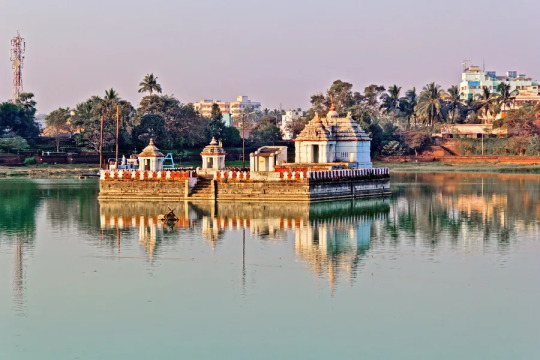
It is a sacred lake of Bhubaneshwar and is located to the north of the famous temple Lingaraj. It is believed that the temple was created by the holy water Lord Shiva brought for Goddess Parvati, to quench her thirst. It is surrounded by numerous temples and shrines. during the annual Car festival (Ashokastami), the Shivalingam of the Lingaraja temple is taken to the Bindu Sagar Lake for the ritual bath.
Udayagiri and Khandagiri Caves

Also known as Kattaka Caves or Cuttack caves are partly natural and partly artificial caves that were built during the 1st century BCE. It is believed that most of these caves were carved out for Jain monks during the reign of King Kharavela to offer a place for residing and meditating. The caves are situated on two adjacent hills, Udayagiri and Khandagiri.
Rajarani Temple

It is a popular 11th-century Hindu temple. It was originally known as Indreswara. It is locally known as a “love temple” because of its sensuous carvings of women and couples in the temple. The sanctum of the temple does not have any deities. However, the figures of Lord Shiva and Goddess Parvati are carved on the walls.
ISKCON Temple

It is located at the heart of Bhubaneshwar city. It is also known as Sri Krishna Balaram Temple. It houses the deities of Lord Krishna, Balarama, Gaura Nithai, Subhadra and Jagannatha. Built with white stone, the temple looks like a half-open lotus or a blooming lotus. the temple organises kirtans, bhajans and pooja on a regular basis.
Odisha State Tribal Museum

It was established in 1953 to celebrate the life and culture of Odisha’s 62 tribal communities and is regarded as one of the best tribal museums in India. It is popularly known as the Tribal Museum. The Museum organises several training programs, workshops and seminars for the conservation of tribal culture and the development of tribal communities.
Chandrabhaga Beach

It is located on the coast of the Bay of Bengal and the eastern side of Konark Sun Temple. It is a famous tourist spot for visitors because of its beautiful scenery of sunrise and sunset. It is one of the cleanest beaches in India and has earned the Blue Flag certification — a tag given to environment-friendly clean beaches, equipped with amenities of international standards for tourists.
Parashurameshvara Temple
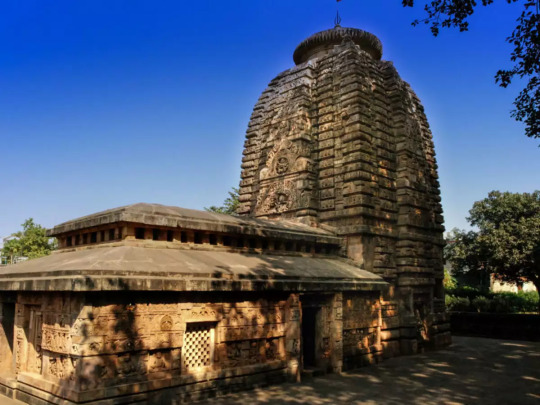
It is an ancient Hindu Temple located near Bindu Sagar Pond, Kedar Gouri Vihar, Old Town, Bhubaneswar, Odisha. It is considered the best-preserved specimen of an early Odia Hindu temple dated to the Shailodbhava period between the 7th and 8th centuries CE. Though Parashurameshvara temple is a Shaiva mandir; it contains the images of numerous Shakta deities as Parsvadevatas sculpted on its walls. The temple walls feature a carved image of the six-armed goddess Durga.
Dhauli Shanti Stupa
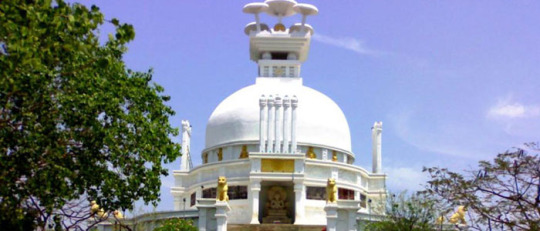
It is a peace pagoda monument which witnesses the great Kalinga War built by Japan Budhha Sangha and Kalinga Nippon Budhha Sangha. It is located on Dhauligiri hill on the banks of the river Daya, 8 km south of Bhubaneswar. The famous Kalinga war was fought in Dhauli and it is said that the Daya river turned red with the blood of the casualties in the war. It is also known as Vishwa Shanti Stupa and Shanti Pagoda.
Nandankanan Zoological Park

It is one of the largest zoos in India and is about 437 hectares. It is built inside a natural forest which is moist and deciduous in nature. The zoo is home to about 1660 individual animals representing 166 species, including 67 species of mammals, 81 species of birds, and 18 species of reptiles.
The Final Note
Bhubaneshwar is famous for its ancient temples and caves, some of which date back over 2000 years. It is also home to Nandankanan Zoo, one of India's largest zoos. The zoo contains a wide variety of animal species. It is the best destination for Hindu families for their religious trips. If you’re looking for a good travel guide service in Bhubaneshwar, please get in touch with Best Trip. We are one of the best travel services in India and we endeavour to give you the best travel experience at the best prices.
0 notes
Photo
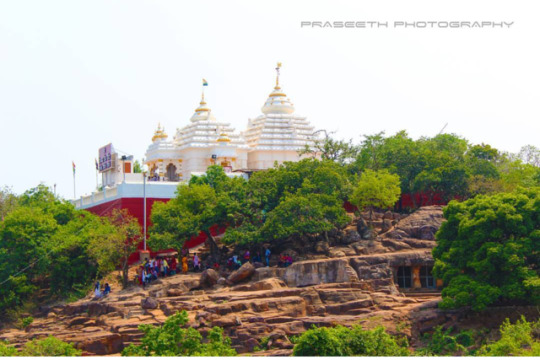
DIGAMBARA Temple is a Jain temple in Bhubaneswar, in the state of Odisha, India. The temple is on the top of KHANDAGIRI hill. This hill is honeycombed with a series of rock-cut Jaina caves, commissioned by King Kharavela in 1st century BCE. . The temple is maintained by Bengal, Bihar and Odisha Digambara Jaina Tirthankara committee. . The temple which faces east, is next to the Rushavanath temple in the south at a distance of 3.50 metres, a northern compound wall at a distance of 2.50 metres and a western compound wall at a distance of 11.50 metres.
#photographers on tumblr#photography#portrait photography#temple#india#passion#monument#history#dslrphotography#tourism#mythology#ancient#worship#tumblr#instagram#twitter#streetphotography#indian
3 notes
·
View notes
Text
Thinking of the time when King Kharavela of Kalinga issued an inscription facing the inscription of King Ashoka of Magadha ( who turned to Buddhism in repentance after causing much bled shed during his war over Kalinga ) recounting his twice victorious campaign over Magadha centuries later. Talk about having some old beef.
0 notes